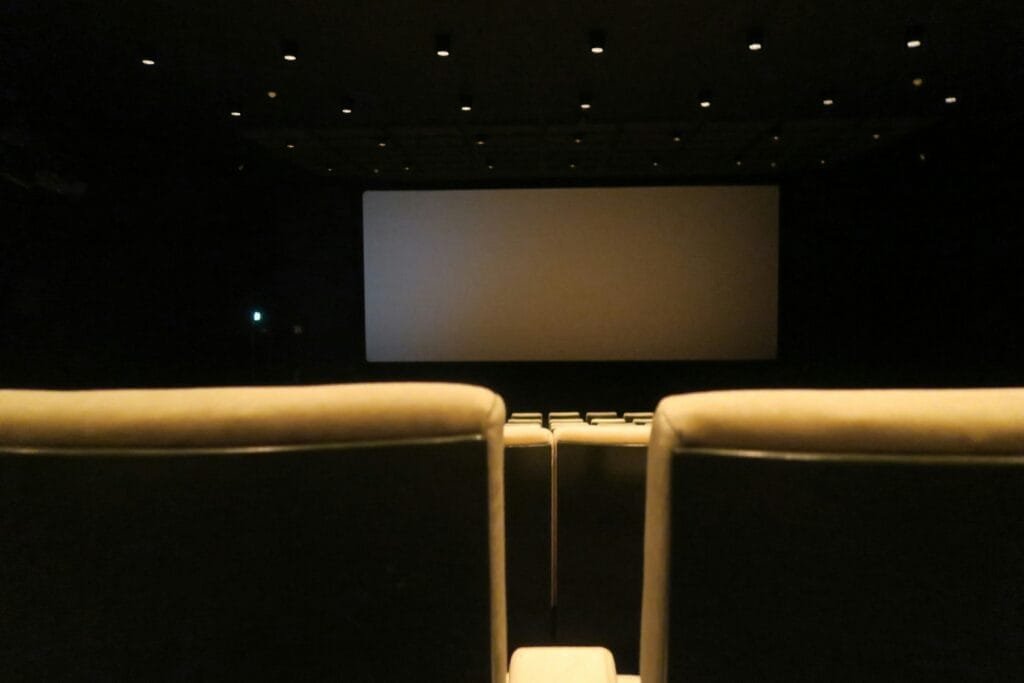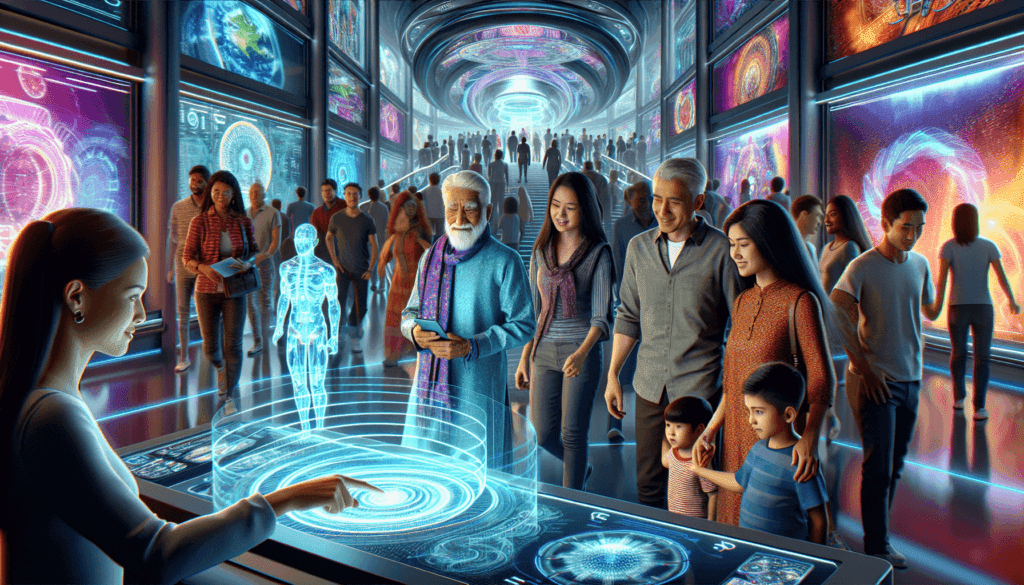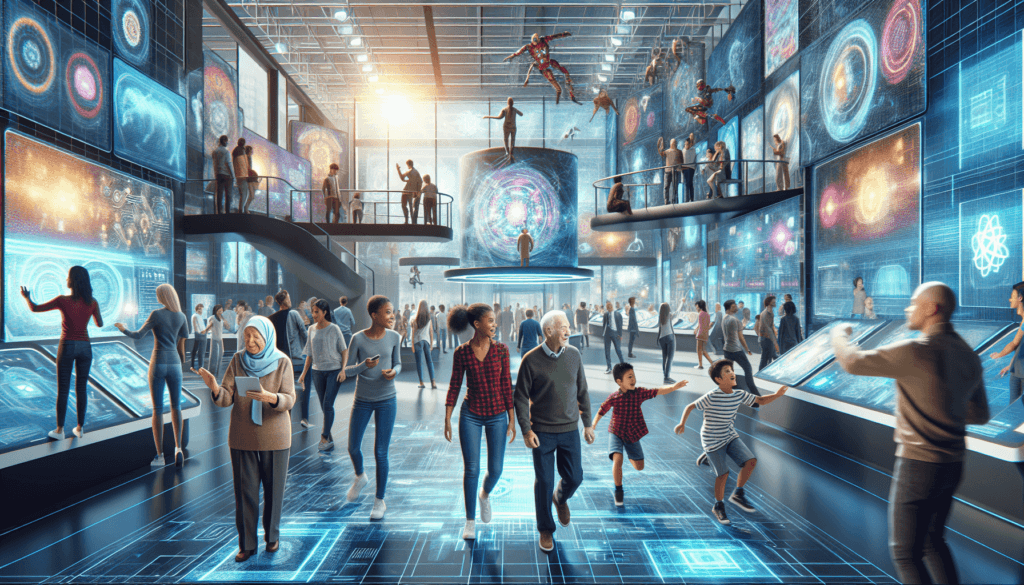Isn’t it fascinating how museums can transform the way we perceive art, history, and science? As they move beyond traditionally passive displays, interactive museums are redefining the cultural landscape by engaging visitors in an immersive, participatory experience. These museums effectively blend learning with excitement, ensuring that visitors walk away not just informed, but inspired and enriched.
The world is increasingly turning to interactive museums as a fresh medium to communicate complex ideas and embody stories in ways never imagined before. They’ve captured the imagination of millions, from seasoned curators and art enthusiasts to families and school groups eager for an educational outing that’s far from ordinary.

Table of Contents
The Evolution of Interactive Museums
The Dawn of Interactivity
Interactive museums began to gain popularity in the latter half of the 20th century, evolving from static exhibits to dynamic environments where visitors could engage directly with content. Traditionally, museums showcased artworks or historical objects behind glass, providing little opportunity for interaction. The realization that people learn better when they participate and engage with the material led to this transformative shift.
Bridging the Gap Between Education and Entertainment
The purpose of museums has traditionally been educational; however, these new-age institutions have successfully blurred lines with entertainment. This stems from the need to cater to digital generations accustomed to interactive mediums. As a result, these museums offer a unique blend of learning and leisure, ensuring that visitors are not only educated but also entertained.
Key Concepts of Interactive Museums
Immersion Through Technology
Modern interactive museums increasingly rely on cutting-edge technology. Augmented reality (AR) and virtual reality (VR) are frequently used to create simulated environments. Touchscreens, motion sensors, and multimedia displays allow visitors to engage directly with exhibits, transforming passive observation into an active exploration.
Personalization of Museum Visits
In these settings, personalization is key. Visitors can often tailor their experiences to suit their interests through audio guides, interactive maps, and customizable tour options. This personal engagement makes visits more meaningful and memorable.
Gamification: Engaging Through Play
Gamification elements are a powerful tool employed by interactive museums. By incorporating game-like elements, such as challenges or quests, museums hold the visitor’s attention longer and enhance the enjoyment of the learning process. This method particularly appeals to younger audiences.

Must-Visit Interactive Museums
Exploratorium, San Francisco
The Exploratorium offers an unmatched experience in its interactive exhibits covering art, science, and human perception. Visitors can engage in hands-on science experiments, explore the phenomenon of light, and even participate in thought-provoking exhibits that challenge perceptions of reality.
Musée du Quai Branly, Paris
In Paris, the Musée du Quai Branly exceeds expectations by marrying non-European arts and civilizations with modern interactive experience. Its multimedia galleries include sound showers and interactive touch tables that offer a sensory-rich insight into various cultures.
The Museum of Modern Art, New York
While traditionally known for its art collections, The Museum of Modern Art (MoMA) in New York integrates technology through interactive installations. Visitors can engage with digital art and watch as virtual works transform and respond in real-time to their presence.
Implementing Interactivity in Museums
Design Strategies for Interaction
Creating an environment conducive to interaction is key. This involves thoughtful exhibit design, employing multisensory experiences, and ensuring technological integration is seamless. Designing for both large audiences and individual exploration presents challenges but also exciting opportunities for creativity.
| Design Element | Impact on Visitor Experience |
|---|---|
| Multisensory Exhibits | Engages various senses, catering to different learning styles |
| Use of Technology | Facilitates deeper understanding and expanded possibilities |
| Interactive Games | Provides engagement and sustained interest |
The Role of Curators in Shaping Experience
Curators today play a pivotal role not just in selecting pieces for display but in orchestrating how these pieces engage audiences. They must balance educational objectives with the need for interaction, ensuring each exhibit tells a compelling story that invites participation.

Challenges and Opportunities
Maintaining Authenticity
The inclusion of interactive elements must not compromise the authenticity of museum content. The challenge lies in integrating technology in a way that enhances rather than detracts from the original context and significance of exhibits.
Adapting to Rapid Technological Changes
Keeping pace with technological advancements is both an opportunity and a challenge. Museums must continually update their technological offerings to remain relevant and engaging but doing so necessitates substantial time and financial investment.
Encouraging Repeated Visits
One of the ultimate goals is to encourage visitors to return. By introducing regularly updated content and seasonal exhibits, along with interactive events or exhibitions, museums can maintain public interest and ensure a fresh experience with each visit.
The Impact of Interactive Museums on Society
Educational Outreach
Interactive museums have a broad appeal due to their educational potential, often expanding outreach efforts beyond typical demographics. Schools frequently use them as learning grounds, making complex subjects accessible and engaging for students.
Promoting Cultural Understanding
They provide a platform for cultural exchange and understanding, presenting multicultural perspectives and global narratives in engaging ways. By immersing visitors in the lives and traditions of people around the world, these museums contribute significantly to global awareness and empathy.

Future Trends in Interactive Museums
Leveraging Artificial Intelligence
The integration of artificial intelligence (AI) in interactive museums is expected to enhance personalized visitor experiences. AI can offer tailored exhibit recommendations and provide in-depth analyses based on visitor interactions.
Sustainability in Museum Design
As with other sectors, sustainability in museum design is becoming a priority. Interactive museums are increasingly utilizing eco-friendly technologies and materials, as well as showcasing exhibits that promote sustainability and environmental consciousness.
Expanding Virtual Access
As virtual reality technology becomes more sophisticated, museums will continue to expand virtual tour offerings, allowing global access to those unable to visit in person. This trend not only broadens audience reach but also preserves exhibits in 3D digital formats for future generations.
Conclusion: The Lasting Imprint of Interactive Museums
Interactive museums are reshaping how we engage with content, fostering lifelong learning and challenging us to think critically about the world. They empower visitors to delve deeper into subjects, inspired by hands-on exploration and discovery. As technology evolves, so too will these museums, continually pushing boundaries and expanding horizons.
Consider visiting an interactive museum and experience firsthand the revolution in museum curation that promises to blow your mind. If you have questions or experience particular challenges during your visits, suggestions for articles on related topics are always welcomed. Explore the dynamic world of interactive museums and embrace the future of learning.

